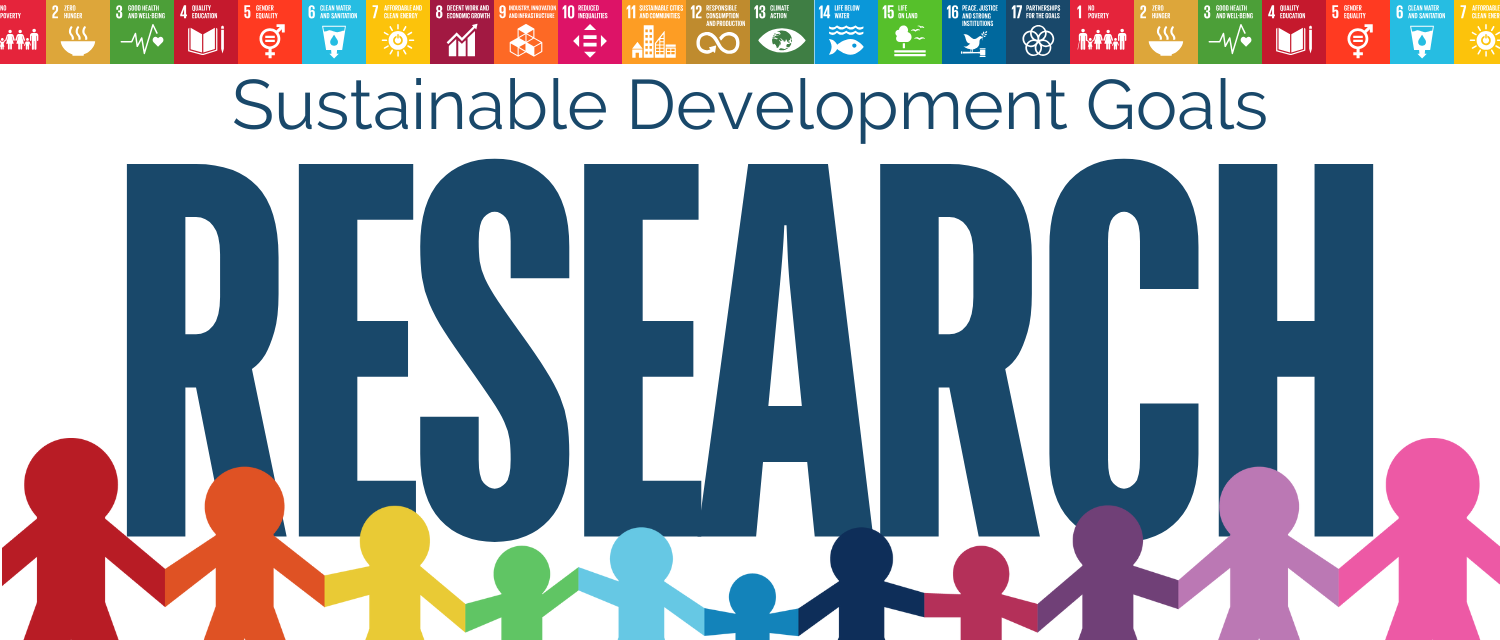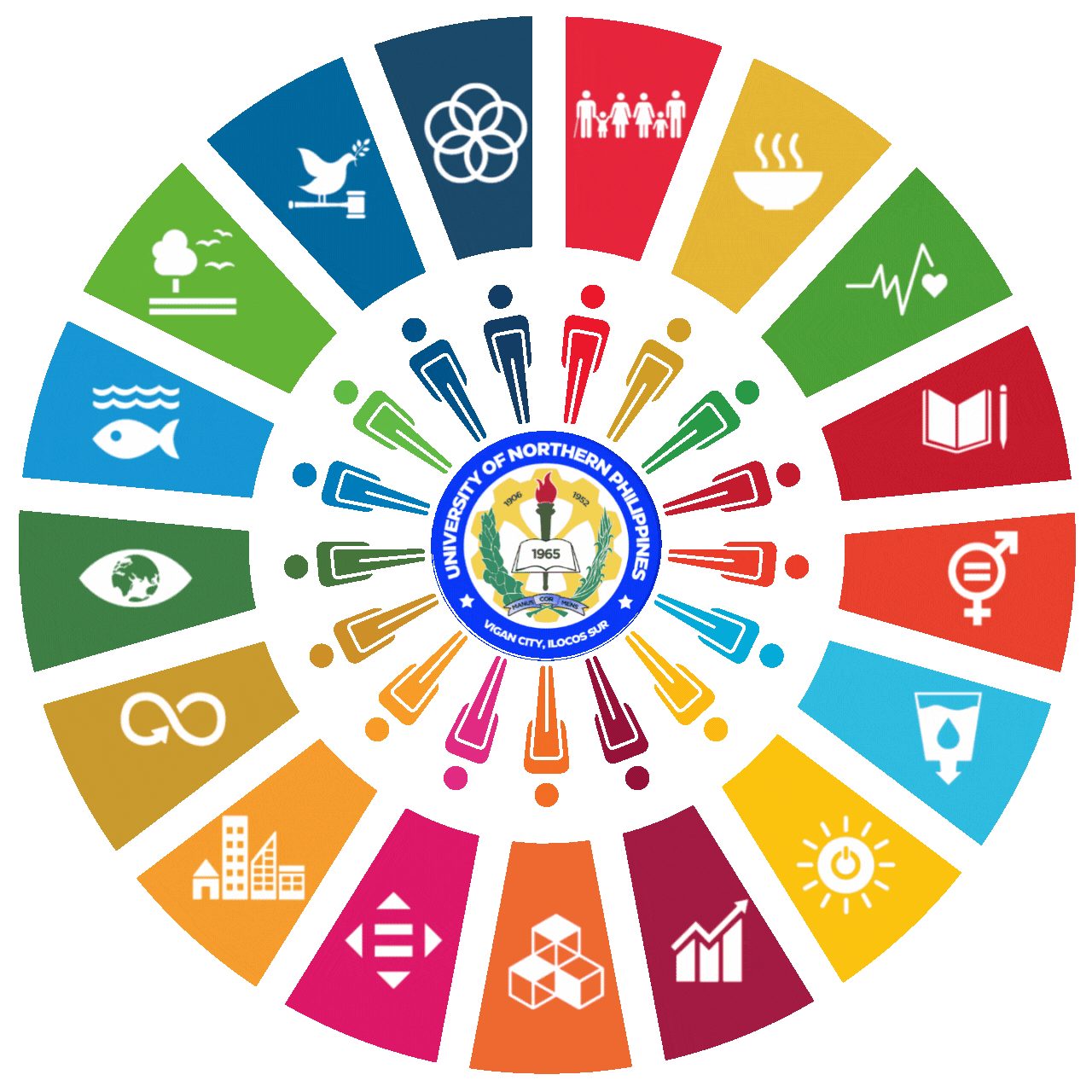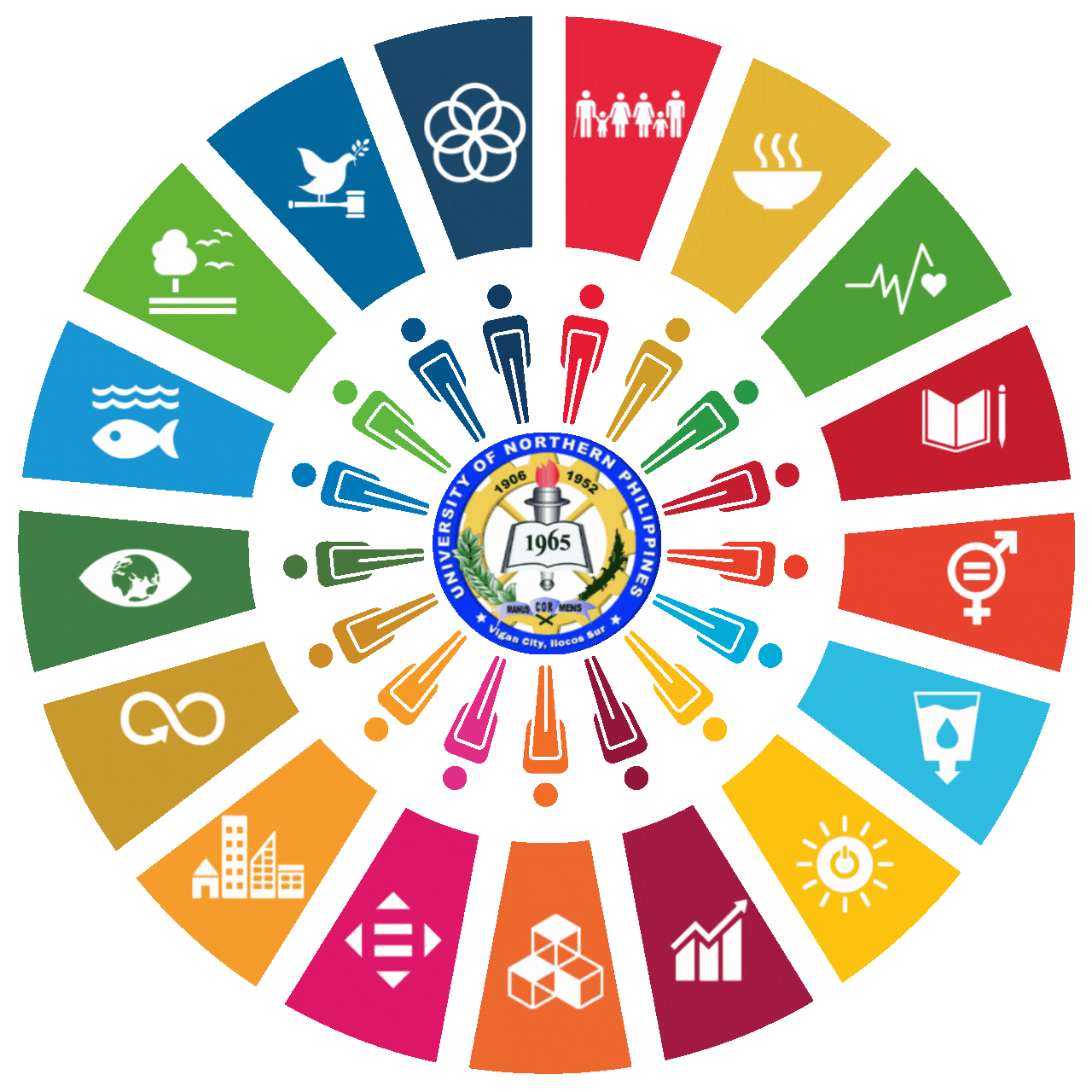

SDG 2 - ZERO HUNGER
The University of Northern Philippines (UNP) affirms a strong commitment to Sustainable Development Goal 2: Zero Hunger through various initiatives that align with the goal’s targets.
Taxonomy of Insects in San Juan, Ilcoos Sur, Philippines
Proponents: KITZ A. ELECHO, JOSHUA A. BATARA, VIRGILIO B. GASCON, MARITESS R. RABOY, ALMA B. SEGISMUNDO, JESSY C. DOMINGO
Abstract
Considered the most diverse animal group on the planet, insects play significant roles in the production of essential seeds, fruits, and vegetables through pollination, decomposition of organic matter, control of populations of other organisms, and provision of food for other taxa, including humans. This study aimed to conduct a taxonomic study of insects in San Juan, Ilocos Sur, Philippines, and classify them as to order family, scientific name, common name, and species richness between the two study areas, Barbar and Immayos Sur. One hundred forty-one (141) adult insects were collected and taxonomically classified employing the latest classification schemes and identification keys from authoritative individuals and databases from credible websites, as well as catalogs, checklists, synopses, and other reliable published references. Of these 141 specimens, which the researchers purely identified, some still need to be adequately identified, including those fifty-six (56) species identified at the family level, sixty-five (65) valid genera, and thirty-two (32) species that were marked ‘INDET’ (indeterminable) but were identified at least at the family level or tribal
level. Twenty-four (24) species are suspected to be new, and a comparison of these with the collections in Natural History Museums is highly recommended for their verification. A tabulated classification of insects occurring in San Juan, Ilocos Sur is presented. In terms of species richness, there are more insect species in the forests and water ecosystems of Barbar than in Immayos Sur, San Juan, Ilocos Sur.
Keywords: species, order, scientific name, species richness
FISDA: Smart IoT-Based Fish Farming Monitoring System
Proponents: Mark Anthony R. Divina, Via Angeline P. Misanes, Jayvee D. Aguinaldo, Noel S. Rafanan
Abstract
FISDA: Smart IoT-Based Fish Farming Monitoring System is a system for the proper monitoring of water quality and feeding factors of fish. The function of the system is to remotely monitor the fish and display the status of water quality, including the water level, total dissolved solids, temperature, humidity, and automatic feed bin level. The overall purpose of the system is to bring comfort to every fish farmer by providing daily insight into fish farm monitoring. In developing the system, researchers used the Rapid Application Development model. As part of the requirements planning stage, information is gathered on what the model should include and how it should function. After gathering design information, the researcher created the model utilizing the hardware and software technologies while considering the user design suggestions. The intended users would then regularly review and apply the model to make sure that the modules were operating as planned. The researchers used a review of related studies, document analysis, and surveys to gather data. The level of usability of FISDA: Smart IoT-Based Fish Farming Monitoring System is determined using an ISO25010 software quality standard tool along with six criteria, namely performance efficiency, scalability, maintainability, security, portability, and usability. According to the findings of the study, the automated system, which earned fish farmers a grand mean of 4.51 is very highly recommended. Automatic fish farming monitoring has been proven to be extremely valuable, efficient, and convenient for fish farmers.
Keywords: IoT device, fish farming, total dissolved solids, load cell weight, temperature, humidity
Enhancing Swine Husbandry: The IoT-Integrated Hog Feeding Assistant
Proponents: Jezzer T. Tibreza, Fernandino S. Perilla
Abstract
IoT-Integrated Hog Feeding Assistant revolutionizes swine husbandry, offering hog raisers crucial insights into feed consumption and operational costs, thereby enhancing overall efficiency and comfort. This paper elucidates the system’s development process, methodology, and usability assessment. Employing the Rapid Application Development model ensured a swift and flexible creation of the Hog Feeding Assistant, guaranteeing the timely deployment of a fully functional system. Essential data for system design and features were acquired through document analysis and surveys. The system’s usability was systematically evaluated using the ISO 25010 software quality standard tool, assessing functional suitability, performance efficiency, compatibility, usability, reliability, security, and maintainability. This comprehensive evaluation provides a profound understanding of the system’s capabilities and user-friendliness. The Hog Feeding Assistant with IoT Integration is strongly recommended for hog raisers due to its remarkable efficiency, convenience, and exceptional usability. Seamlessly integrating into daily operations, the system not only streamlines feeding processes but also furnishes valuable insights, empowering more informed decision-making in swine husbandry.
Keywords: Swine husbandry, IoT integration, rapid application development, usability assessment, feed consumption optimization
Biogas Generation from Vegetable Waste and Horse Dung through Improvised Anaerobic Digester
Proponents: Maria Angelica J. German, Rosaly P. Paiste, Crissa Mae D. Rafanan, Vincent P. Pilien
Abstract
Biogas significantly reduces the environment’s vast supply of animal manure and food waste, which causes nitrogen and water pollution. Biogas is a sustainable fuel created when microorganisms decompose organic matter, such as food or animal waste, without oxygen, which is known as anaerobic digestion. This study considered vegetable waste (VW) and horse dung as substrates in producing biogas. The study aims to generate biogas in 34 kg of mixed vegetable waste and horse dung into two designs of experiments with different proportions and study how these proportions affect the amount of biogas produced within the period of 10 and 13 days. This study employed an experimental research design wherein data were collected through surveys, timely observations, and primarily through experiments. After ten days, the first experiment produced yellow with a little blue, while the second experiment produced blue with a little yellow. Likewise, after 13 days, the mixed waste consisting of 30% each of VW and Horse manure was fed into the digester (experiment 1) and lasted 3.22 minutes. In contrast, the mixed waste, consisting of 20% VW and 40% Horse dung, was fed into the digester (experiment 2) for 7.22 minutes. Furthermore, both experiments produced blue with a little bit of yellow. On water temperature, experiments 1 and 2 were able to boil 200 ml of water from 3°C to 5.20°C and 6.10°C, respectively. These results signify the effectiveness and efficiency of the chosen substrate in producing biogas. It is recommended that future research in the same field shall consider economy and comparison between different substrates. Also, to measure biogas’s heat capacity and design a digester with catalyst and substrate mixer.
Keywords: Substrate, sustainable fuel, methanogenic bacteria, biogasification


















